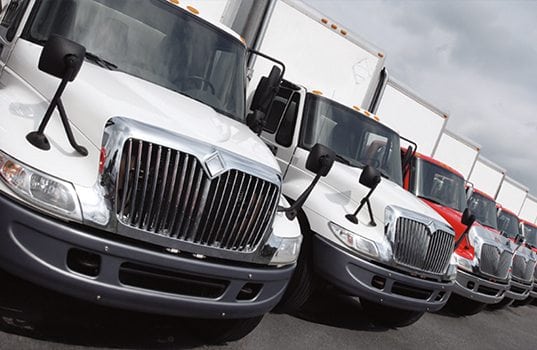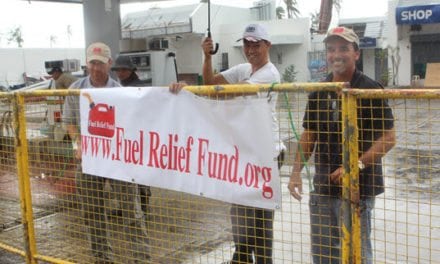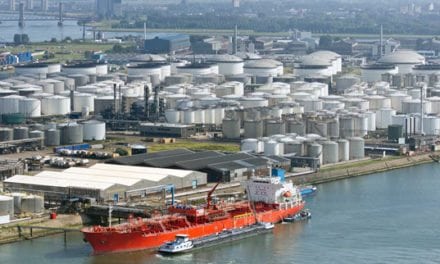By Shane Dyer
In our last article, Share of Wallet – Fact or Fiction, we discussed the risk marketers face when issuing universal fleet cards to customers who are acclimated to fueling at their proprietary locations. In our experience, indiscriminately allowing access to outside locations results in “retail bleed” that will negatively impact your bottom line and will lead to higher fuel costs for your fleet customers. Our goal was to point out that this process needs to be carefully managed.
There is another side to this narrative, and that is to selectively issue a universal card on an as-needed basis. We strongly support issuing a universal card, such as Voyager, to customers who need a larger geographic footprint than what your proprietary card network offers. Let’s face the facts, there are fleets who need to travel, or have other divisions, in areas where you don’t have any locations. If you don’t identify these needs and provide a solution, those customers will eventually consolidate into a universal card product outside your control. The key to success is in how you strategically embrace the universal environment.
First of all, a card issuer’s directly owned locations are the most optimal fueling environments for everyone involved, including the fleet customer. In directly owned sites, the card issuer is able to make enough money on the direct sale of the fuel to support the efforts involved in managing a fleet fueling system, such as sales, support, card production, transaction processing systems, billing, credit extension and much more. When the card issuer has to rely upon locations other than their own, particularly retail locations within the universal card network, much less revenue is earned. As a result, fees above and beyond the price of fuel are often assessed in order to make the required return on investment.
Typical fees that can be found on invoices from the major fleet card issuers include transactions fees (ranging from $1 – $5), monthly per card charges, card delivery fees, fleet management fees, statement/reporting fees, online access fees, late fees, etc. These can add up to as much as $0.05 per gallon or more (depending upon the situation) that the fleet is paying above the price at the pump. In fact, one of the key metrics stock analysts consider when evaluating publicly traded fleet card companies is the revenue per transaction.
This concept is somewhat foreign for petroleum marketers who have historically avoided adding fees. However, as you increase your exposure to the universal card and the retail fueling locations outside your ownership, you must consider how you are going to earn enough money to make it worthwhile. Unlike the wholesale/cost model that is available in your own locations or the reciprocal cardlock networks, the revenue on a universal card transaction is based on a percentage of the retail price. Under the current programs available for petroleum marketers, they realize on average between 1.25% and 2% of the posted retail price.
The graphic below illustrates this revenue model:
Most universal programs are netting the marketers around 1.75% or less of the retail posted price. After transaction fees and cost of doing business, the marketer may actually lose money, particularly in periods of low retail prices. Obviously the marketer can seek lower transaction processing fees and to reduce operational costs through efficiency and volume, however most will find these illustrated values to be fairly accurate.
Adding simple fees to the invoice for retail based transactions can actually make the business model profitable, and marketers need to shift their mindset. It’s also important to realize, as the fleet card industry continues to consolidate due to recent mergers and acquisitions, universal card fees are likely going to increase as a result of less competition. In a recent earnings call for one international fleet card company, the following was stated, “We saw strength in new customer acquisitions and our attrition rate remains at extremely low levels driven by our continued focus on the value we bring to our customers. We also continue to add income from customer fee revenues.” This statement illustrates the obvious; you must charge fees to make the ROI.
So where does this leave the petroleum marketer who owns sites and may, or may not, belong to a reciprocal cardlock network? In order to compete you should make sure you have a universal card product in your tool set, and then begin a systematic approach introducing the option. But remember, as we previously noted in Share of Wallet – Fact or Fiction we do not recommend that you give every customer this card.
In our opinion, the first order of business is to begin assessing your customer’s needs through retention calls. In a recent training clinic with a marketer, we called several of their mid-sized customers only to discover that many had other divisions not being served by the marketer’s cards and/or they had been acquired by another company outside their area who was beginning to consolidate the fuel purchasing. In each instance, we were able to introduce the universal card option and explain that we were more than capable of meeting their expanded needs. This represented not only an important chance to retain volume, it resulted in the opportunity to grow volume.
The key is to ensure you illustrate to the customer why your cardlock (or directly owned retail) locations are the optimal fueling environment and that you provide a unique solution not available through the national fleet card options. In addition to having highly controlled and efficient fueling environments, you offer a competitively priced, fee-free option in these locations because you are the actual distributor of the petroleum products. Advise them that the goal is to drive as much of their volume through these optimal locations, and then defer to the less efficient, poorly controlled, higher cost retail locations when the better option is not available. In the end this will provide the greatest value for their company, and for yours.
This approach would be exactly the same when targeting a new customer. It effectively differentiates you from the majority of the competition in the market. You will also notice that this strategy maintains the principle marketing message of “cardlock locations are better,” so you won’t be reversing your long established value justification in your market. It elevates your locations and diminishes the broader retail fueling option.
I’ve repeatedly used this technique to successfully convert customers from the national card issuers, some buying as much as 250,000 gallons a month. With larger customers, you will also find yourself introducing cost plus pricing as an option. This option is very unique to the petroleum distributors and their reciprocal fueling networks. When rack to retail spreads are $0.50 and the customer is saving $0.35 per gallon, the $0.02 discount the major card issuers are offering becomes almost laughable to those fleets who understand how the business works.
A final consideration before you jump into the universal card world is to ensure your billing system has the necessary functionality to support your strategy. Most systems are weak when it comes to this environment. In some cases, how they price these transactions can actually extend your losses. For example, one universal fleet card product is accepted in Arco locations where the marketer’s cost is actually 101% of the retail price. Some systems are pricing the transactions at retail, not recognizing the net loss until it hits the P&L. In other instances, the ability to charge fees is very limited and can’t be assessed based on transaction type or merchant locations. Our recommendation is to conduct a detailed review of your system’s functionality according to your objectives, and then thoroughly test with beta customers before jumping in with both feet. You can always call our company for advice in this area.
If you follow these recommendations, we believe that you will enjoy a rewarding business opportunity in the universal card world.
 Shane Dyer is the president of PowerUp Fleet, Inc. He possesses over 32 years petroleum automation, operations, and executive management experience with a focus on commercial fleet fueling and cardlock networks. PowerUp Fleet, Inc. provides sales force automation/CRM solutions specific to the petroleum industry along with sales training, sales management, and executive consulting services. Contact: (541) 388-5120 or [email protected] and visit PowerUp Fleet at: www.powerupfleet.com
Shane Dyer is the president of PowerUp Fleet, Inc. He possesses over 32 years petroleum automation, operations, and executive management experience with a focus on commercial fleet fueling and cardlock networks. PowerUp Fleet, Inc. provides sales force automation/CRM solutions specific to the petroleum industry along with sales training, sales management, and executive consulting services. Contact: (541) 388-5120 or [email protected] and visit PowerUp Fleet at: www.powerupfleet.com










